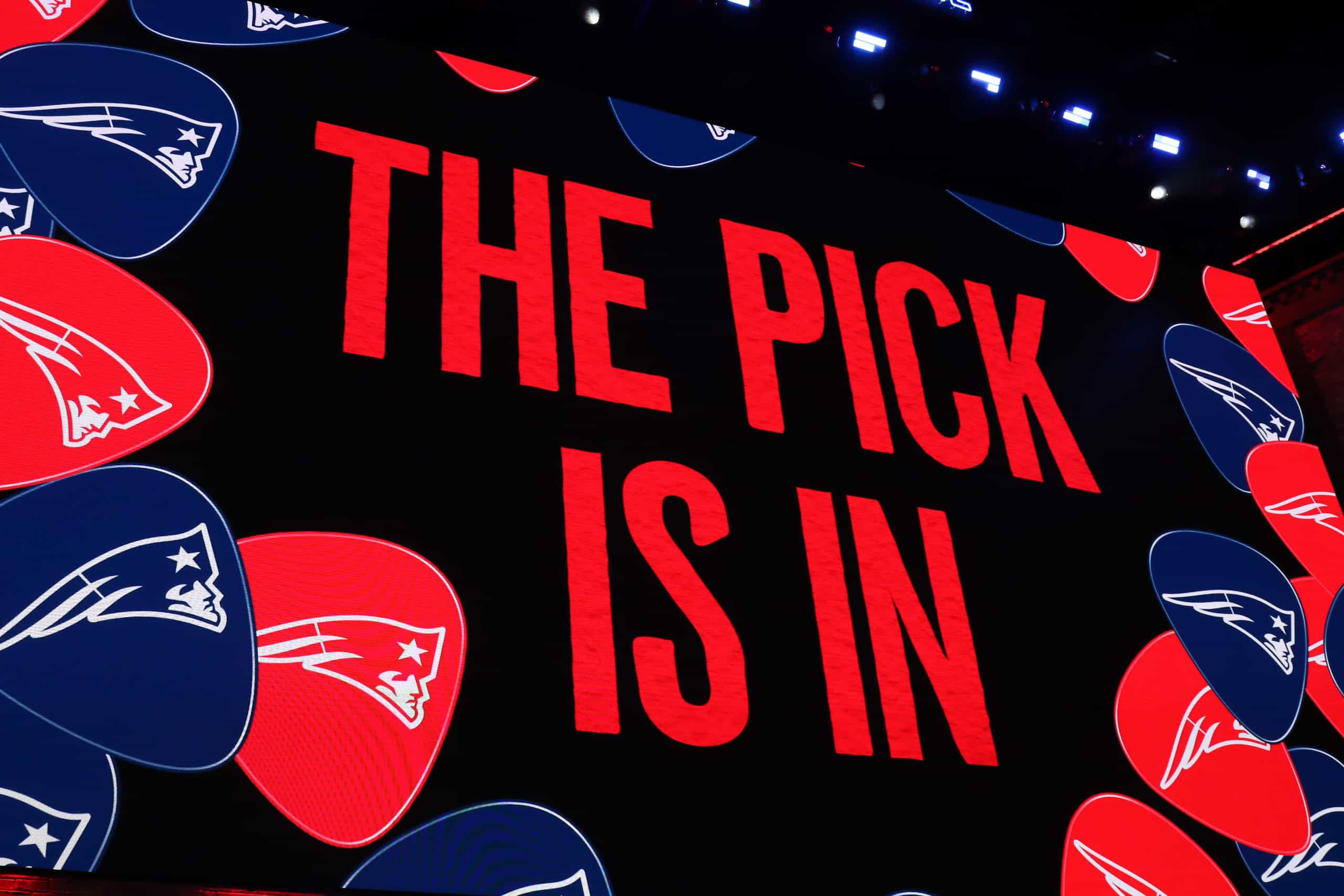Every March, the NFL awards compensatory picks, or “comp picks.” Every year, as March Madness is about to occur, football junkies start talking about these comp picks. But most of the general population doesn't realize how important they really are. The NFL's comp picks have been important for years. But they've become even more important since 2017, when the NFL allowed teams to trade comp picks, thus allowing them to be treated like any other draft pick. What do you need to know about the NFL's comp pick process and, in particular, what this means for the 2020 NFL season's allotment of comp picks?

Comp Pick Breakdown
A total of 32 compensatory picks are awarded to teams based on the players they lost or gained during free agency in the year prior. This allows clubs that have lost free agents to another team to use the draft to attempt to fill the void. The value of compensatory FAs gained or lost by each team is calculated by the “proprietary formula” and a club is awarded picks of equal value to its net loss of such FAs, up to four. The picks come at the end of Rounds 3 through 7.
Why does this matter? Wouldn't it be better to not lose free agents and let other teams get these mid to lower-level (outside the top-96) draft picks which are more of a crapshoot?
Many teams don't have a proper gauge to measure future performance vs present worth. Players are often awarded contracts based on prior performance, but many teams ignore an important ingredient which is the roster implications of awarding a nice contract to a player who outplayed his prior contract.
A goal of building a complete roster is accumulating a collection of players who synergistically are capable of outperforming what they are being paid. When that combines with great coaching, Super Bowl teams are built.
When a player reaches free agency, it is typically for a reason. The team decided not to extend that player's deal before it reached its conclusion. Sometimes that isn't a red flag, but oftentimes, it should be. Even for average players, a bidding war ensues during free agency. The fact that the NFL continues to increase the salary cap only encourages such dueling between front offices.
This further increases the player's cap hit to the “lucky” team that signs him. And that makes it more unlikely that the player will be capable of outperforming what he is being paid.
As such, this is why so many player signed to multi-year deals in free agency are cut before those deals reach years 3 or 4, and why so many of these players fail to live up to expectations. The expectation that the player, on a new team with different players and coaches, can even live up to the performance he was able to deliver at his peak on a prior team that maximized his ability to deliver (and hence record great statistics which make him a desirable free agent) is low. Expecting this player to meet, let alone surpass that performance to the point that he's outperforming his new contract is a risky proposition.
Extending great players before their contract ends is smart. Extending integral role players at low cost before their contract ends is also smart. Overpaying top players from other teams on day 1 or day 2 of free agency can work in rare cases, but typically is unwise. In general, building through free agency does not work.
Building through the draft is far more effective. But it is difficult. Each year, teams are given only 7 draft picks by the NFL, and it is very difficult to consistently excel at evaluating and projecting college athletes. I'm not 100% on the train that drafting all players is completely random. I believe that certain talent evaluators are better at understanding certain position groups. But by and large, it is difficult to consistently hit draft picks.
In a somewhat random game, teams that acquire more draft picks are more likely to walk away with better players.
And this is the point.
Two keys to building great rosters. Don't overpay other team's players in free agency and do try to accumulate more draft picks.
The “kill two birds with one stone” mechanism to exploit both keys?
Compensatory picks.
Let expensive players that aren't critical to your team walk, let other teams overpay them and don't sign expensive day 1 or day 2 free agents from other teams. Those principles make sense even if the NFL wasn't rewarding you for being intelligent.
But you get another bonus.
You also get free picks in the form of comp picks. The NFL awards 32 of them each year.
Let's examine the teams that have most benefited from comp picks the last 4 years:
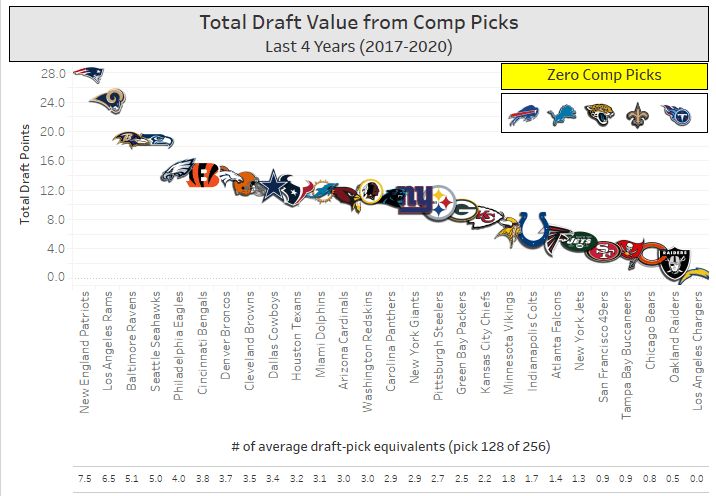
2020 Comp Picks
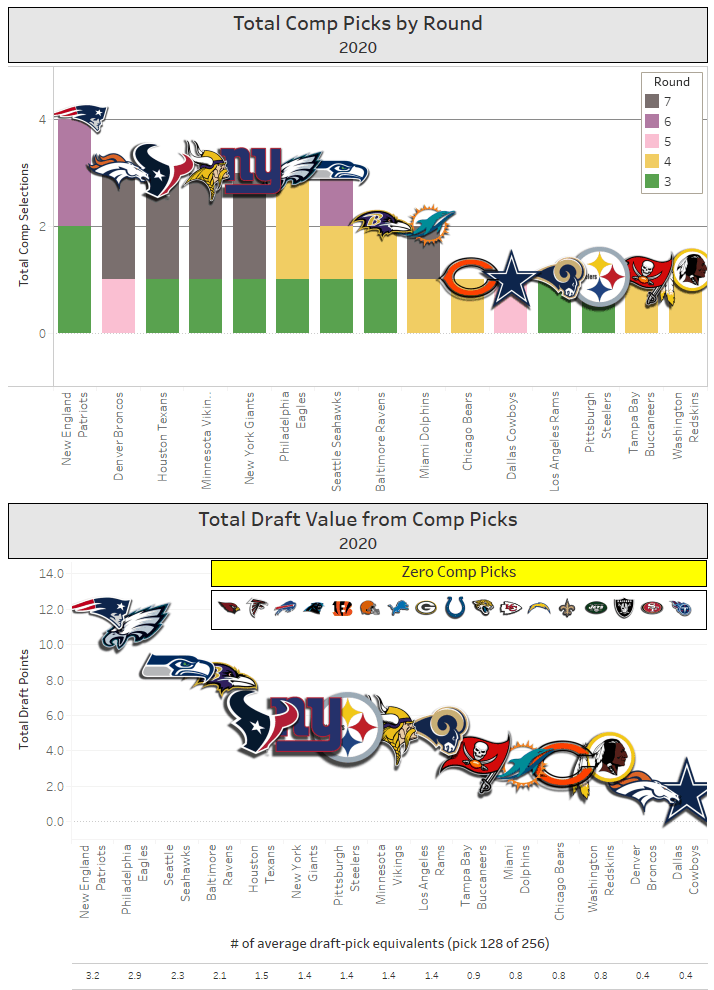
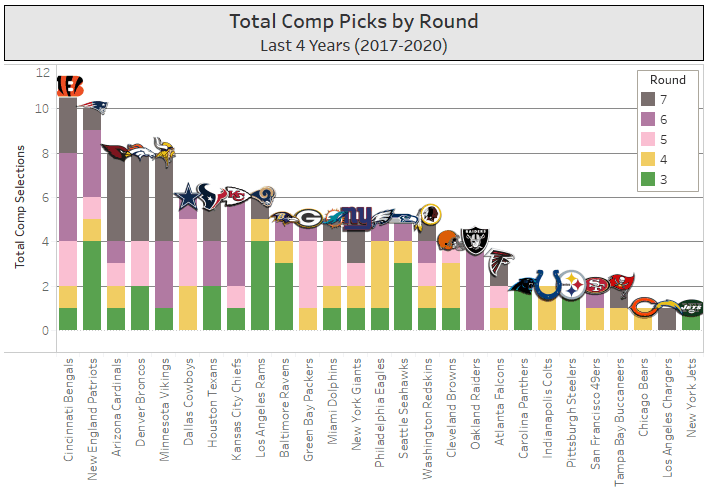
Comp Pick Value
Another way to understand compensatory picks is to look at average draft pick equivalents. This concept is simple.
The average draft pick is pick 128 of 256, and it has a certain value assigned to it based on draft points.
By totaling the number of draft points a team acquired over the last 5 years and dividing by the value of pick 128, it is possible to compute the number of “average draft-pick equivalents” a team has gained.
Just by comp picks alone, the Patriots have added 7.5 draft pick equivalents in the last 4 years!
That’s astonishing. Effectively, by playing the comp pick game, Bill Belichick has acquired four third-round picks, one fourth, one fifth, three sixth-round picks and one seventh. Those ten picks equate to roughly 7.5 average draft picks. We're not talking low-round picks. They've acquired 7.5 of pick-128 of 256.
As we know, the draft has a ton of variance. More arrows in the quiver means more shots at hitting and typically translates into more hits.
In the last 4 years, 10 teams haven't earned the equivalent of ONE average draft-pick.
This means that over the last 4 years, 31% of the NFL hasn't earned a single average draft pick while Belichick's Patriots have earned 7.5!
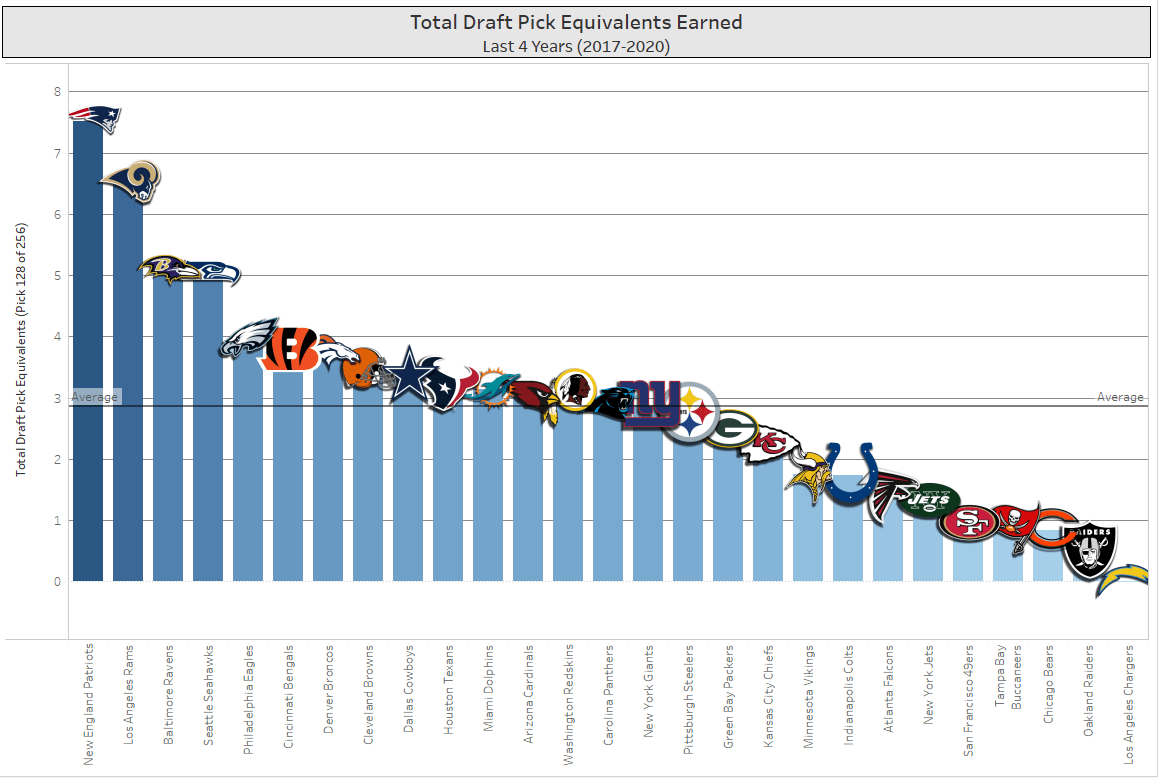
And teams wonder why the Patriots continue to dominate. It's by giving themselves the chance to do so, via owning the comp pick process.
There are many ways to build a strong roster. With cap increases, some teams are allowing themselves to dabble more in free agency than they did in the past (such as the Packers in 2019) and this strategy isn’t inherently wrong. Some years, adding certain free agents will make sense. But history has shown us that devoting too much of your roster construction on building through free agency is inefficient. With comp picks now capable of being traded (new rule in 2017), some of the smartest teams are taking advantage of this rule.


